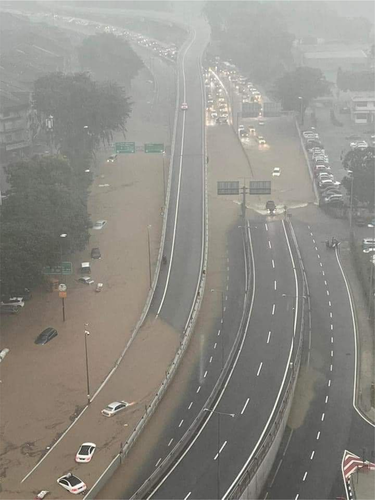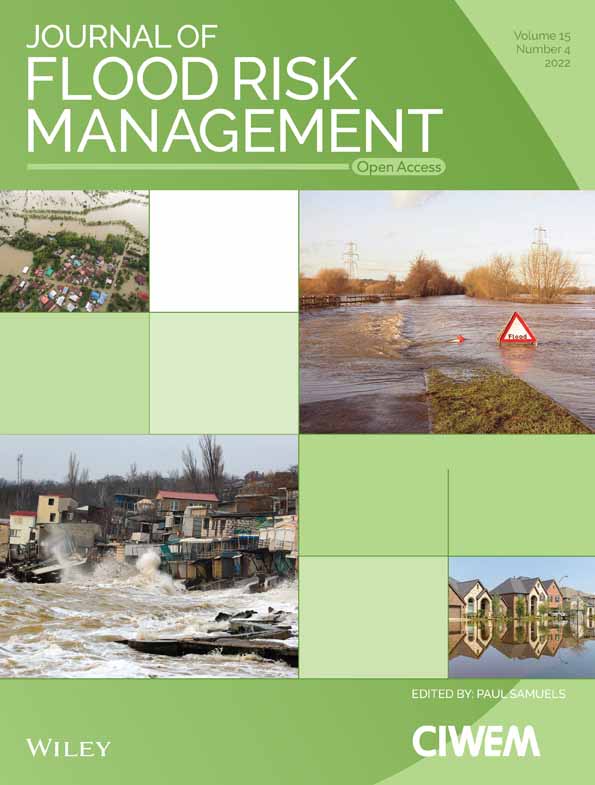Managing a road as a river to mitigate the impact of urban flash floods
Extreme floods due to short-term heavy precipitation are observed worldwide frequently along with high intensity (IPCC, 2022). Urban extreme flash flooding, especially due to climate change, is a great concern for economic and non-economic losses and damages (Lee, 2021). Among many flood mitigation approaches, the function of a smart tunnel of Kuala Lumpur is a motorway during dry days, and as a river channel during flood days; whereby motor vehicles are prohibited to use the tunnel during floods; are also prohibited to be within several kilometres of this tunnel. Minimal flood impacts were observed for areas within smart tunnel coverage (Anne, 2022). Thus, a similar concept and practice should be done for highways and motorways in Kuala Lumpur and Malaysia which are flood-prone during heavy downpours especially the unexpected heavy downfalls in densely populated cities, streets, and areas that are easily flooded when there is a continuous heavy downpour within an hour or so. If these situations can be coupled with intelligent systems that can give prior predictions of a day or two, then the local authorities can issue orders for motorists to not drive their vehicles into these flash flood-prone areas on those days, hence people can avoid situations of vehicles being submerged in floodwaters and reduce the big losses and damages. Short-term heavy rainfall now is very frequent in Kuala Lumpur due to climate change, it caused flash floods in the capital via overflowing the rivers, and the drainage system is unable to channel the water into the rivers (Bernama, 2022)
The 9.7 km long Stormwater Management and Road Tunnel (SMART) at Kuala Lumpur is the longest tunnel in Malaysia and the second longest stormwater tunnel in Asia. Commissioned by the Government of Malaysia, this tunnel is the pride of engineers since the risk of the city being flooded has been estimated to be once every 100 years. In addition, this MYR 1.88 bn (approximately $ 514 m) tunnel has been very effective at handling 30,000 cars per day and has been used more than 44 times to divert floodwater since its operation began in 2007 (Dept. of Irrigation and Drainage, 2017; Road Traffic Technology, 2022). However, due to the rapid changes in rainfall patterns, the city requires more tunnels like this; otherwise, the losses and damages arising from the flash floods will impact the national gross domestic product (GDP) as well as hinder green growth (Aiman, 2021; Lee, 2021; Mahalingam, 2021; Sunbiz, 2022).
The governance of managing roads prone to floods in cities of Malaysia, we suggest should be under the purview of the Department of Irrigation and Drainage (DID) because during flood times roads are now considered ‘rivers’. Whereas jurisdiction of road systems in Malaysia is under the Department of Road Transport (RTD), and Traffic Section of Royal Malaysia Police (PDRM), Dept. of Public Works, etc. Therefore, the proposed concept requires a significant shift of thinking, and governance of roads during floods to fit in and align with the concept of SMART Tunnel of Malaysia that is governed by DID; and in cooperation with RTD, PDRM, Ministry of Works, etc. Some cities want to build smart tunnels in the future as one way to overcome future floods and to avoid big losses and damages. But these smart tunnels are not cheap, not easy to construct, and not easy to be achieved in the short term because of its high costs and high engineering challenge. Hence, the concept and approach suggested here is quite feasible and do-able almost immediately at relatively low costs by many cities and local authorities, along with good cooperation and collaboration among communities and other stakeholders (Figure 1).

Open Research
DATA AVAILABILITY STATEMENT
The data used from secondary sources were dully cited in the text.




